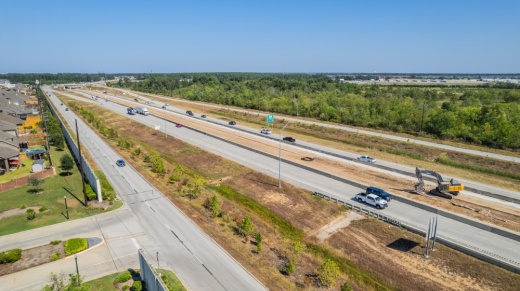The project will run along the F-2 segment of the Grand Parkway from Hwy. 249 in Tomball to Holzwarth Road in Spring. Construction, which began in June, will widen the roadway from four to six lanes and replace the toll road’s grassy median with a concrete barrier, TxDOT officials said.
Brandi Beyer, vice president of the Greater Tomball Area Chamber of Commerce, said she believes the widening will help Tomball’s infrastructure keep up with the area’s growth.
“Tomball can continue to grow and develop as long as our infrastructure keeps up,” she said. “It’s a big deal that the Grand Parkway is trying to keep up with the growth.”
Breaking down the project
The Tomball-area Grand Parkway expansion project is divided into two parts with work underway on Segment A, which stretches from Hwy. 249 to Kuykendahl Road. TxDOT Public Information Officer Bambi Hall said this portion of the project is estimated to take 32 months and cost $55.7 million to complete.
Work on the second portion of the project—Segment B, which runs from Kuykendahl to Holzwarth roads—is expected to open for contractor bidding on Sept. 1, 2027, Hall said. This segment will take up to 36 months to complete and was previously estimated to cost $45.94 million. An updated cost estimate was not available as of press time.
Both segments of the expansion are being funded by Grand Parkway toll revenue, which is managed by the Grand Parkway Transportation Corp., Hall said. No major changes have been made to the expansion project since its conception in late 2022.
Dozens of restaurants, shops, apartments and other businesses are located along TxDOT’s Grand Parkway expansion project.
Larreen Hawks, an employee at family-owned business Hawk’s Law Firm—located near the Grand Parkway and FM 2920—said business has not been impacted so far by the construction. However, Hawks said she doesn’t expect expanding the Grand Parkway’s number of lanes will alleviate traffic.
“We’ve been here 25 years,” Hawks said. “They put a [sign] in front of our parking lot so we can’t turn left out of our parking lot anymore. There’s a bunch of complaints about that, but other than that [no complaints].”
In response to an Oct. 28 Facebook post from Community Impact asking locals to share their thoughts on the project, resident Judy Cucchi DeTrude said she never knows what traffic will be like when she uses the roadway.
“This is a new highway, so I cannot understand why someone did not have the foresight to have more lanes when it was constructed,” DeTrude wrote in her response. “It would have been cheaper and less disruptive to do it in the very beginning.”
Some context
Segment F-2 of the Grand Parkway—which runs from Hwy. 249 to I-45 North—opened to traffic and tolling in February 2016.
Hall said the roadway opened with four lanes because development of the Grand Parkway is governed by a Market Valuation Waiver Agreement that TxDOT signed with Houston’s seven counties in 2009. The agreement called for a four-lane, controlled access toll road, but included markers for potential future expansion—level of service thresholds, which are met when a “significant number of vehicles stop at signals,” according to TxDOT’s annual 2023 report.
Over the past eight years, data shows traffic has increased along Segment F-2 of the Grand Parkway. From 2021 to 2023, traffic increased by 89% at the Hwy. 249 intersection and by 29% at the FM 2920 intersection, according to TxDOT data. As a result, Hall said the roadway is now being expanded after reaching the level of service threshold.The economic impact
North Houston Association President Marlisa Briggs said she believes easing congestion along the Grand Parkway will improve access to businesses in the area, while providing land development opportunities for residential projects.
“Small businesses are the lifeblood of thriving communities,” Briggs said. ”Independently owned and operated stores and restaurants [along the Grand Parkway] ... rely on customers being able to access their places of business.”
Beyer said she believes that, for businesses in the area to function efficiently, surrounding infrastructure such as roads need to be able to move traffic.
“Businesses are looking to come to places that have good transportation access, and residents moving in are looking for good transportation access,” Beyer said.
According to prior reporting by Community Impact, over the past 18 months, at least seven businesses have opened along the Grand Parkway between Hwy. 249 and Holzwarth Road.
What to expect
Work for Segment A so far has included demolition for widening and drainage, Hall said. The next project stage, slated to begin in mid-to-late 2026, will include the widening of the roadway and bridges.
“You can live further away from your job if you can get to and from it in the same amount of time, even if it’s further out,” Beyer said. “I know that we’re all excited about sitting in traffic less.”
Despite the challenges of expanding a roadway “in a dense urban environment,” TxDOT aims to minimize traffic disruptions, Hall said.
“TxDOT and all its contracting partners prioritize safety, daily, to work effectively and expeditiously,” Hall said.
Carson Weaver contributed to this report.





